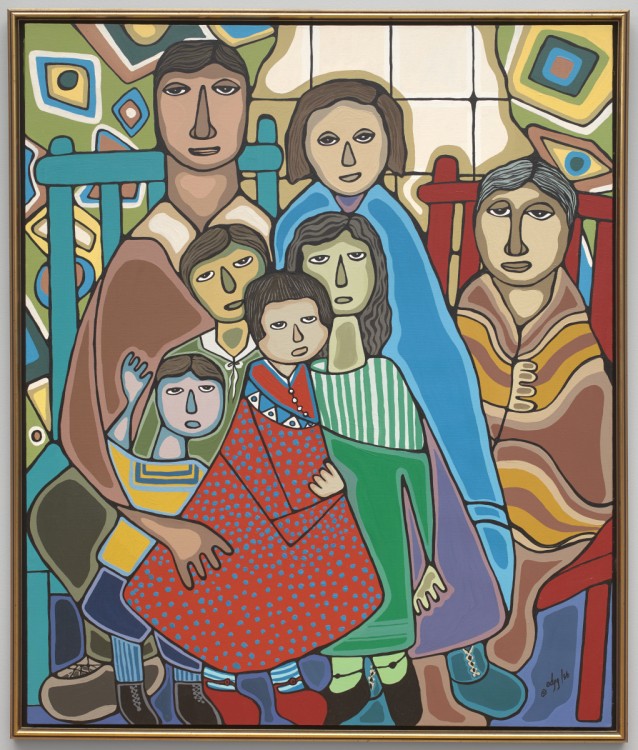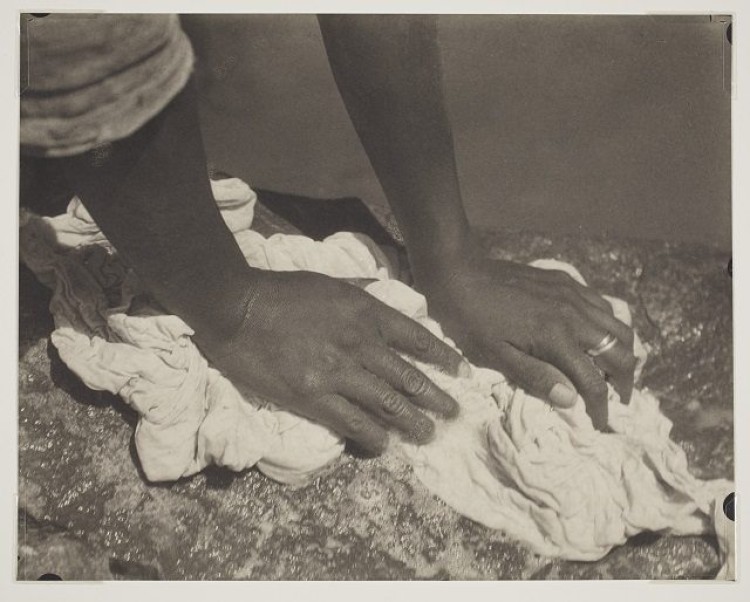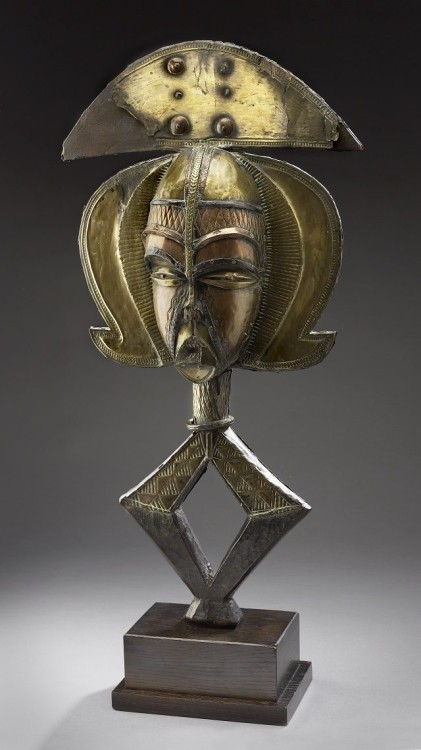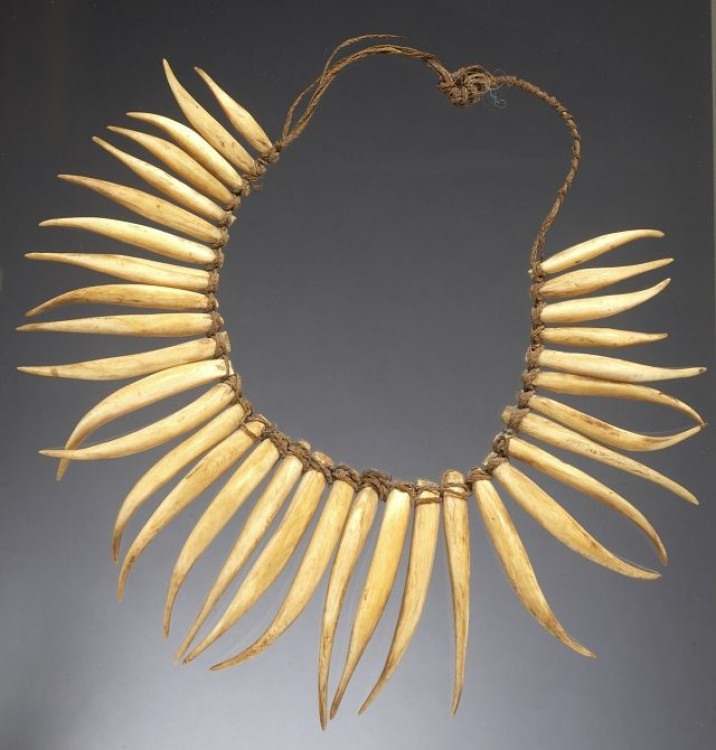5 in 35: travel edition
You can take a 35-minute tour around the world with these five works from the AGO Collection.
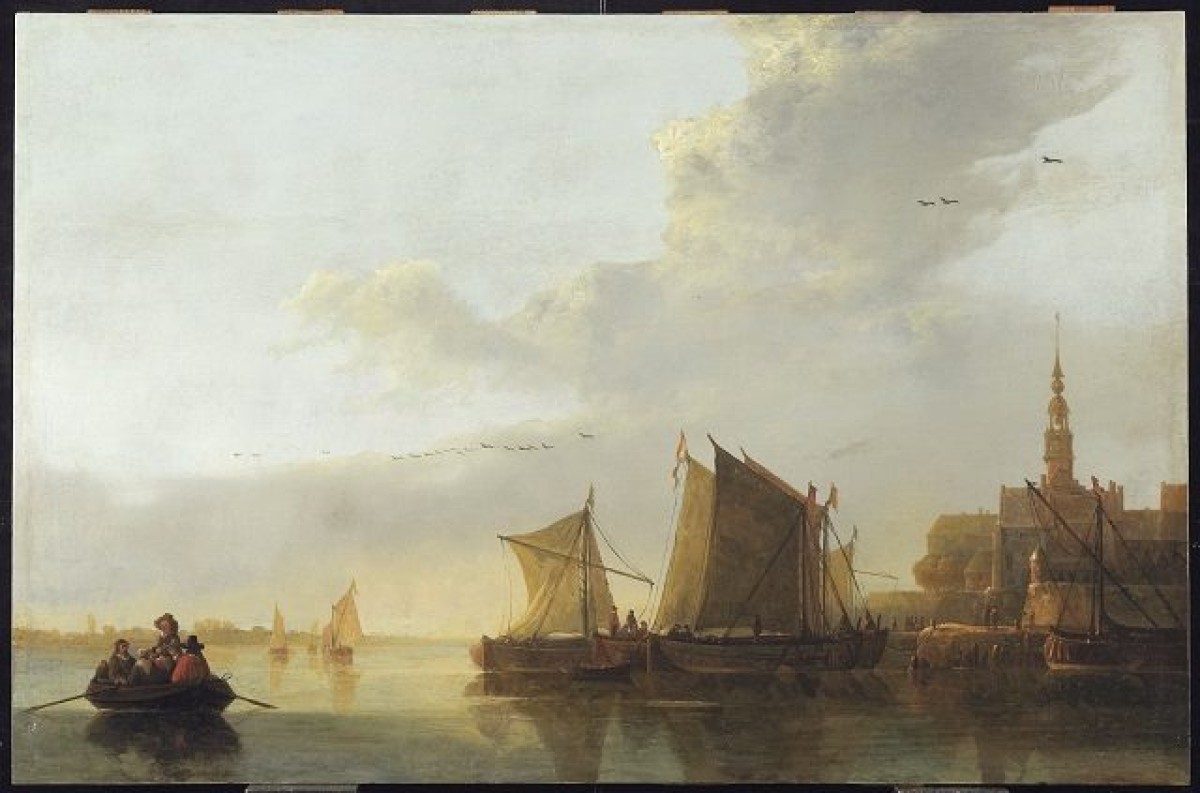
Here are some of our favourite works from the AGO Collection hailing from five different countries, so you can embark on a 35-minute world tour in the heart of Toronto.
Let’s start right here in Canada with the work of Daphne Odjig. Born in Wikwemikong Unceded Territory on Manitoulin Island, Odjig is widely considered to be the grandmother of First Nations art. This acrylic painting (pictured above), aptly titled Odjig Family; Father, Mother, Grandfather, Stanley, Daphne, Donald, Winnie, Xmas, Dec 25th (1986) is a warm, colourful depiction of her family in a collective embrace. Acquired by the AGO in 2016 in commemoration of Odjig’s passing, the piece (located on Level 2 in the Georgia Ridley Gallery, Gallery 234) is indicative of her iconic style, which includes strong outlines, overlapping shapes and a nuanced sense of colour.
Next we travel south to Mexico City to witness the iconic work of famed Communist photographer Tina Modotti. Friend to Frida Kahlo and Diego Rivera, Modotti used a modernist aesthetic to uniquely document the people and culture of Mexico City in the early 1900s. Here, in the platinum print Hands of a Washerwoman, we see two hands pushing a soapy, white garment against a large rock. This moment depicts both the simple beauty of human hands and, from a political perspective, the class and labour dynamics at play. Hands of a Washerwoman is on display on Level 1 in the Edmond G. Odette Family Gallery (Gallery 128).
It’s time to cross the pond to West-Central Africa, and get acquainted with the ancient sculptural work of the Kota People of Gabon and Northwestern Congo. This Reliquary Guardian Figure from the late 18th century is a sacred artifact displayed on Level 2 in the Murray Frum Gallery (Gallery 249). The Kota People employed this spirit figure as a guardian of reliquary baskets containing the bones of admired ancestors. The sheet brass covering its face was understood to repel negative spirits and energies.
Continuing due north, our next stop is Dordrecht, Netherlands, home of 17th century Dutch painter Aelbert Cuyp. His oil on wood painting, View of Dordrecht (pictured at the top), is a depiction of Cuyp’s hometown port and a clear indication of why he is considered one of the leading Dutch Golden Age painters. The vast, pale blue cloudy sky is the perfect backdrop to the brown, textured sailboats and people that fade into their own reflection in the water beneath. You can find View of Dordrecht on Level 1 in the E.R. Wood Gallery (Gallery 121).
The last leg of our tour takes us deep into the south Pacific, to the picturesque shores of Fiji. As part of the Thomson Collection on Level 2 in Gallery 222, you’ll find this traditional Fijian tribal whale’s tooth necklace from the mid-19th century. Made from the sharpened teeth of a sperm whale, a ‘Wasekaseka’ was commonly worn by various tribes throughout Fiji, Tonga and Samoa. The sharpened teeth were symbolic of honour, power and wealth, so the necklace often adorned high-ranking, important members of society.
See? In and out in no time, but with a whole new sense of the world. With a collection the size and breadth of the AGO’s, you could pop in for a quick visit every week with your AGO Annual Pass.
Admission to the AGO Collection and all special exhibitions is always free for AGO Members, AGO Annual Pass holders and visitors 25 and under. For more information, please visit the website.
Are you an AGOinsider yet? If not, sign up to have stories like these delivered straight to your inbox every week.

